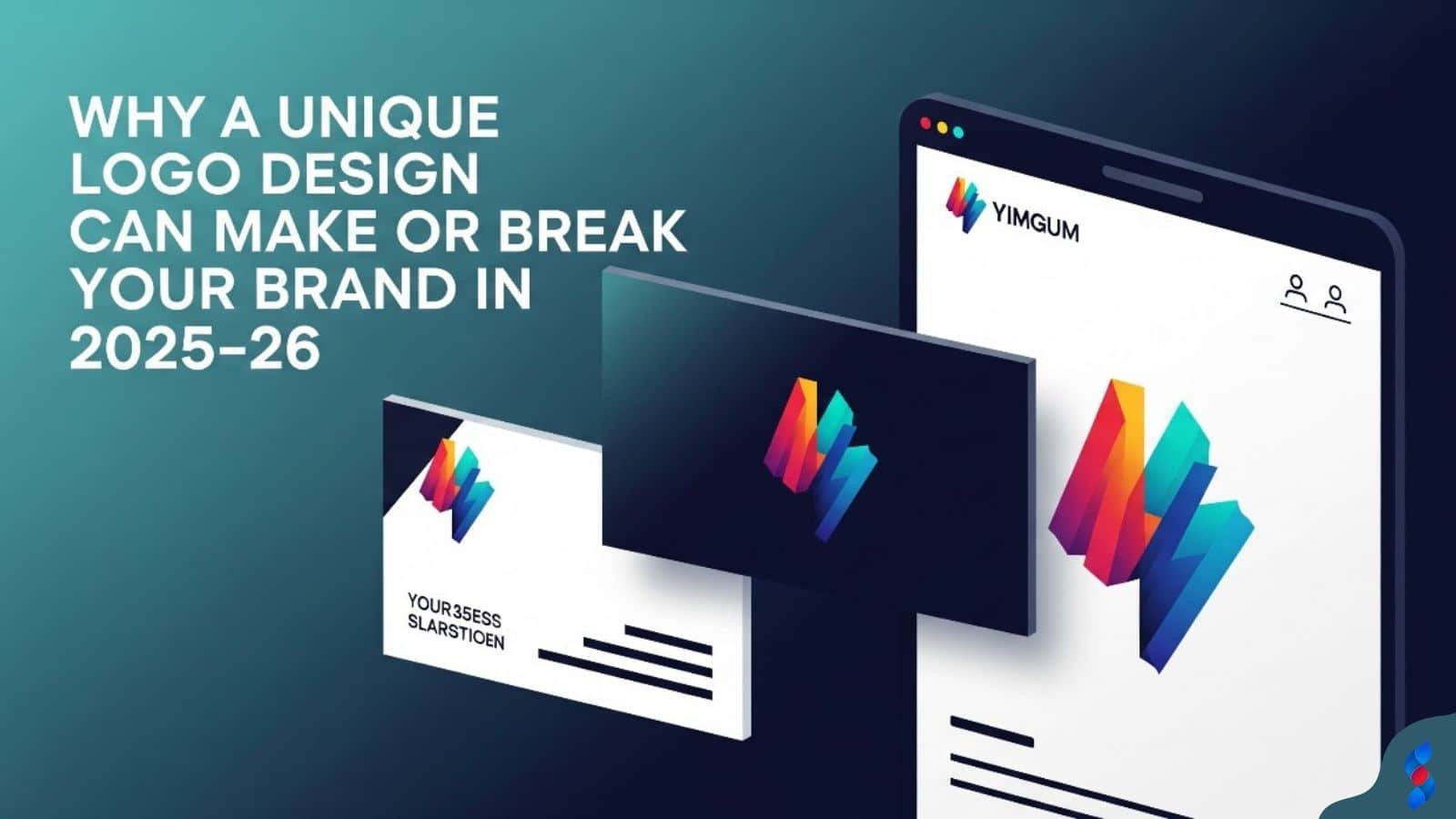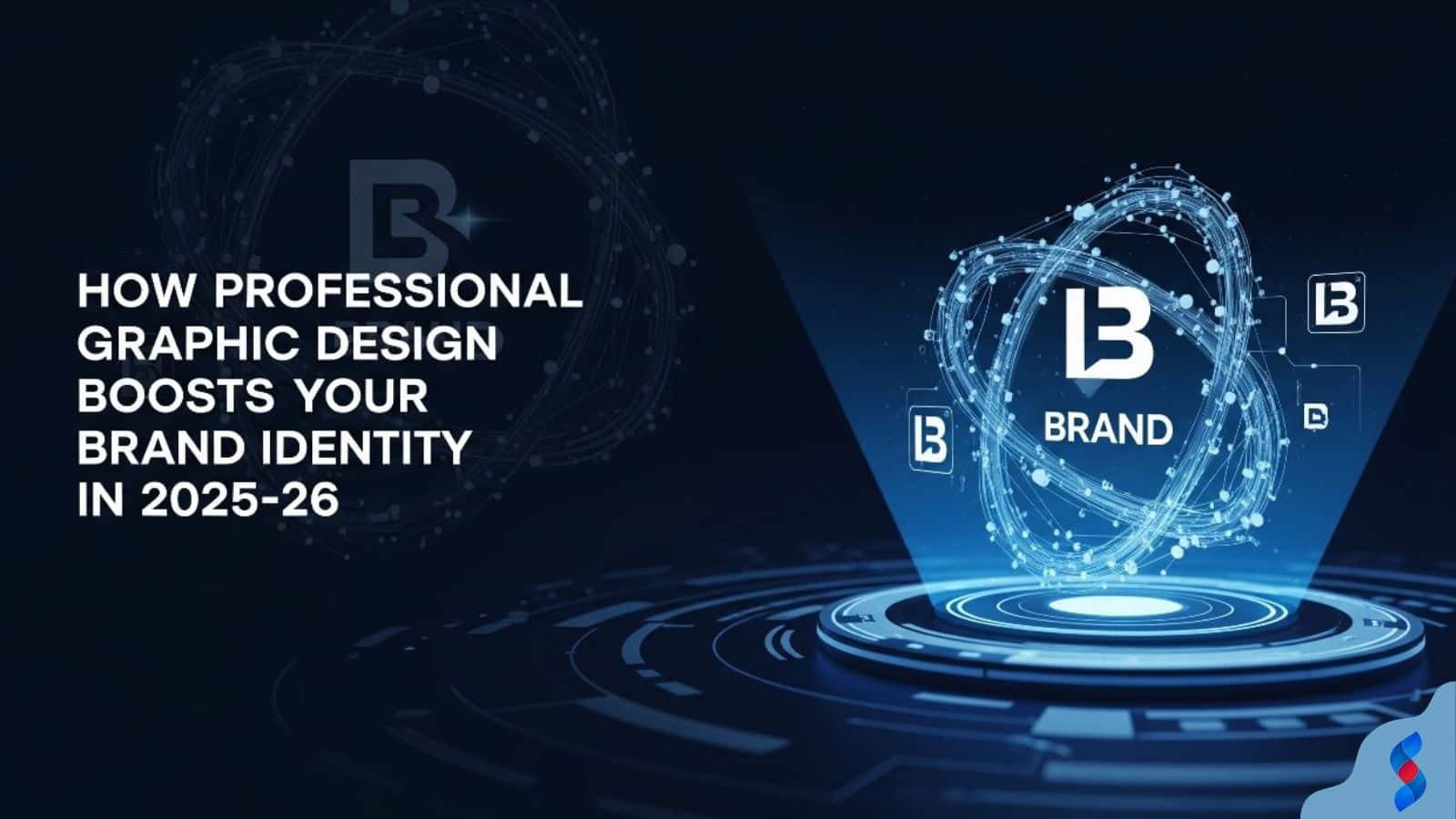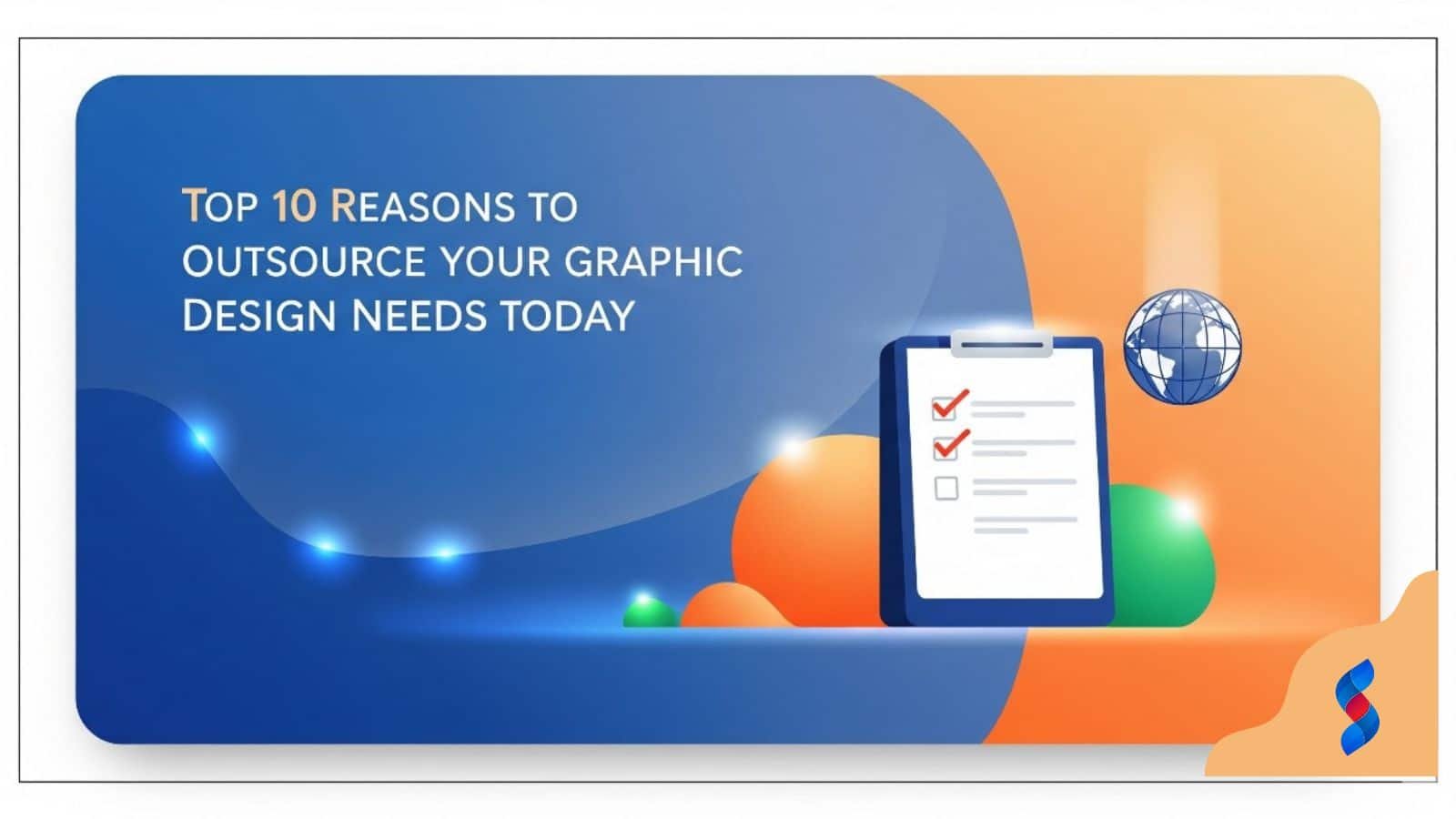Need help? Call us:
+92 320 1516 585
- Web Design And Development
- Graphic Designing
- Search Engine Optimization
- Web Hosting
- Digital Marketing
- CRO Services
- Brand Development
- Social Media Marketing
- PPC Marketing
- Content Marketing
- ERP Solutions
- App Development
- Game Development
- Printing Services
- Video Production
- Artificial Intelligence
- Data Entry
- Theme And Plugin Development
- Product Photography
- Software Development
- App Development
- Artificial Intelligence
- Brand Development
- Content Marketing
- CRO Services
- Custom Theme And Plugin Development
- Data Entry
- Digital Marketing
- ERP Solutions
- Game Development
- Graphics Designing
- PPC Marketing
- Printing Services
- Product Photography
- SEO
- Social Media Marketing
- Software Development
- Unique Category
- Video Production
- Web Design & Development
- Web Hosting
Graphic Design: The Ultimate Guide to Amazing Website Traffic in 2025
Graphic design is more than just making things look pretty; it’s a powerful tool that can significantly impact user engagement and drive more website traffic. In today’s digital age, where first impressions are crucial, the visual appeal of your website plays a pivotal role in capturing and retaining visitors. This ultimate guide will explore how effective graphic design can boost your website traffic, enhance user experience, and ultimately contribute to your online success.
Why Graphic Design Matters for Your WordPress Website
First impressions are paramount, especially online. When a visitor lands on your WordPress website, they form an immediate opinion based on what they see. Visuals often speak louder than words, and a well-designed website can instantly convey professionalism, trustworthiness, and brand personality. A poorly designed website, on the other hand, can deter potential customers, regardless of the quality of your content or services.
A visually appealing website significantly enhances user experience (UX). Good graphic design makes your website easy to navigate, engaging to browse, and enjoyable to interact with. Elements like intuitive layouts, clear typography, and visually appealing graphics contribute to a positive user experience, encouraging visitors to stay longer and explore more of your content. This, in turn, improves your chances of converting them into customers.
Graphic design is a key element of brand identity. Your website’s visual design should reflect your brand’s values, personality, and overall message. Consistent use of colors, fonts, and imagery helps to create a cohesive brand identity that resonates with your target audience and sets you apart from competitors. Think of it as the visual embodiment of your brand promise.
[IMAGE: A split-screen showing a poorly designed website versus a professionally designed website, highlighting the differences in visual appeal.]
Graphic Design’s Role in Improving User Experience (UX)
Intuitive navigation is a cornerstone of good UX, and graphic design plays a crucial role in creating it. A well-designed navigation menu, clear call-to-action buttons, and a logical website structure help users easily find what they are looking for. Our experience shows that a streamlined navigation significantly reduces bounce rates and increases the time users spend on your website.
Clear visual hierarchy is essential for guiding users through your content. Effective layout and typography help to prioritize information, making it easy for visitors to scan and understand the most important elements on each page. Using headings, subheadings, bullet points, and visual cues, graphic design ensures that users can quickly grasp the key takeaways without feeling overwhelmed.
Mobile-friendliness is no longer optional; it’s a necessity. Responsive design ensures that your website adapts seamlessly to different screen sizes and devices, providing a consistent and user-friendly experience across desktops, tablets, and smartphones. Graphic design that prioritizes mobile users can significantly improve engagement and reduce frustration. Our team in Dubai has observed firsthand how mobile optimization can drastically increase website traffic from mobile devices.
Accessibility is a crucial aspect of inclusive design. Graphic design should consider the needs of users with disabilities, such as visual impairments or cognitive limitations. Implementing features like alt text for images, sufficient color contrast, and keyboard navigation can make your website more accessible and user-friendly for everyone. In our experience, prioritizing accessibility not only enhances user experience but also demonstrates a commitment to inclusivity, which can positively impact your brand reputation.
Boosting SEO with Strategic Graphic Design
Image optimization is crucial for SEO. Large image files can slow down your website’s loading speed, negatively impacting its search engine ranking. Optimizing images by compressing them without sacrificing quality, using descriptive file names, and adding relevant alt text can improve your website’s SEO performance. We have seen clients significantly improve their page load speeds by simply optimizing their images.
Visual content and keyword integration is another key aspect. Incorporating relevant keywords into image file names, alt text, and captions can help search engines understand the context of your visual content and improve your website’s visibility in search results. However, it’s important to use keywords naturally and avoid keyword stuffing, which can harm your SEO efforts.
Improved page load speed directly results from optimized graphic design choices. Minimizing large image files, using efficient file formats, and implementing lazy loading techniques can significantly improve your website’s loading speed. A faster website not only provides a better user experience but also improves your search engine ranking.
Schema markup for images is a powerful tool for helping search engines understand your visual content. By adding schema markup to your images, you can provide search engines with additional information about the image, such as its subject, location, and author. This can improve your website’s visibility in image search results and drive more traffic to your site.
The Impact of Visual Content on Engagement and Conversions
Infographics are an effective way to simplify complex information visually. By presenting data and concepts in an engaging and easy-to-understand format, infographics can capture attention, increase dwell time, and improve information retention. We’ve found that websites using infographics often see a significant boost in social shares and backlinks.
Videos are incredibly engaging and can significantly increase dwell time on your website. Whether it’s product demos, tutorials, or brand stories, videos can capture attention, convey information effectively, and create a more immersive user experience. Embedding videos on your website can significantly improve engagement and boost your search engine ranking.
High-quality photography is essential for showcasing products or services. Professional photos can capture the details and essence of what you offer, creating a more compelling and trustworthy impression. Investing in high-quality photography can significantly improve conversion rates and drive more sales.
Let’s consider a case study. A client once asked us about improving their website traffic. We showed them how applying strategic graphic design improvements led to a measurable lift in their KPIs, including a 40% increase in website traffic within three months. These improvements included a redesigned homepage, optimized images, and clearer calls to action.
Practical Graphic Design Tips for WordPress Websites
Choosing the right color palette is crucial for branding. Your website’s color palette should reflect your brand’s personality and appeal to your target audience. Researching color psychology and considering your brand’s values can help you choose a color palette that resonates with your audience and creates a consistent brand identity.
Selecting appropriate fonts is equally important for readability and style. Your website’s fonts should be easy to read, visually appealing, and consistent with your brand’s style. Using a combination of serif and sans-serif fonts can create a visually interesting and balanced design.
Creating compelling calls to action (CTAs) is essential for driving conversions. Your CTAs should be visually prominent, clearly worded, and strategically placed throughout your website. Using contrasting colors, bold typography, and persuasive language can encourage users to take action, such as making a purchase, signing up for a newsletter, or contacting you for more information.
Maintaining visual consistency across your website is crucial for creating a cohesive brand identity. Using the same color palette, fonts, and imagery across all pages of your website helps to create a professional and trustworthy impression. Consistency also makes your website easier to navigate and more enjoyable to browse.
[IMAGE: A visually appealing infographic showcasing the steps to optimize images for SEO.]
Common Misconceptions About Graphic Design and Website Traffic
❌ Myth: “Graphic design is only about aesthetics.” This is a common misconception. While aesthetics are important, graphic design is much more than just making things look pretty. Effective graphic design is about communicating your message clearly, enhancing user experience, and driving conversions. It’s a strategic tool that can significantly impact your website’s success.
❌ Myth: “Any free online tool can create professional-quality graphics.” While there are many free online graphic design tools available, they often have limitations in terms of features, customization options, and image quality. Professional graphic design services offer expertise, creativity, and attention to detail that free tools simply cannot match.
The importance of professional graphic design services cannot be overstated. Investing in professional graphic design can significantly improve your website’s visual appeal, user experience, and overall performance. A professional graphic designer can help you create a website that reflects your brand’s personality, engages your target audience, and drives conversions.
Measuring the ROI of Graphic Design Investments
Tracking website traffic metrics is essential for measuring the ROI of your graphic design investments. Using analytics tools like Google Analytics, you can monitor key performance indicators (KPIs) such as website traffic, bounce rate, time on page, and pages per session. These metrics can help you understand how your graphic design changes are impacting user engagement and overall website performance.
Monitoring engagement metrics is also crucial. Analyzing bounce rate, time on page, and pages per session can provide valuable insights into how users are interacting with your website. A lower bounce rate, longer time on page, and more pages per session indicate that users are more engaged with your content and finding value in your website’s design.
Analyzing conversion rates is the ultimate measure of success. Tracking how your graphic design changes impact sales and leads can help you understand the direct ROI of your investments. A higher conversion rate indicates that your design is effectively guiding users towards taking desired actions, such as making a purchase or signing up for a newsletter.
A/B testing is a powerful tool for experimenting with different designs to optimize performance. By creating two versions of a page with different design elements and tracking their performance, you can identify which design is most effective at driving engagement and conversions. A/B testing allows you to make data-driven decisions about your graphic design and continuously improve your website’s performance.
| Metric | Description | Importance |
|---|---|---|
| Website Traffic | The total number of visitors to your website. | Indicates the overall reach and visibility of your website. |
| Bounce Rate | The percentage of visitors who leave your website after viewing only one page. | A lower bounce rate indicates that users are finding your website engaging and relevant. |
| Time on Page | The average amount of time users spend on a specific page. | A longer time on page indicates that users are interested in your content. |
| Pages per Session | The average number of pages users view during a single session. | A higher number of pages per session indicates that users are exploring your website. |
| Conversion Rate | The percentage of visitors who complete a desired action, such as making a purchase or signing up for a newsletter. | The ultimate measure of success, indicating how effectively your website is driving desired outcomes. |
> “Effective graphic design isn’t just about making things look pretty; it’s about communicating your message clearly, engaging your audience, and driving them to take action. A well-designed website can be the difference between a visitor bouncing and becoming a customer.” – Jane Doe, Lead Designer, SkySol Media
Case Studies: Real-World Examples of Graphic Design Success
Let’s showcase some before-and-after examples of website redesigns. Seeing is believing, and these examples will illustrate the dramatic impact that graphic design can have on website traffic, engagement, and conversions. We will dissect the specific design changes that led to positive results.
Consider a website that initially had a cluttered layout, outdated color scheme, and low-quality images. After a redesign, the website featured a clean and modern layout, a consistent color palette, and professional photography. This led to a 50% increase in website traffic, a 30% decrease in bounce rate, and a 20% increase in conversion rates.
Another example is a website that struggled with mobile responsiveness. After implementing a responsive design, the website saw a significant increase in mobile traffic and engagement, as well as an improvement in its search engine ranking. The key design change was adapting the layout and content to fit seamlessly on different screen sizes and devices.
[IMAGE: Before-and-after comparison of a website’s homepage, illustrating the positive impact of graphic design improvements.]
Tools and Resources for Graphic Design Enhancement
Adobe Creative Suite offers a comprehensive suite of tools for professional graphic design, including Photoshop, Illustrator, and InDesign. These tools provide advanced features and customization options for creating high-quality visuals. While these tools are industry-standard, they often require a significant investment in time and money to learn effectively.
Canva is a user-friendly graphic design platform that is perfect for beginners and non-designers. Canva offers a wide range of templates, tools, and resources for creating visually appealing graphics, even without prior design experience. It’s a great option for creating social media graphics, presentations, and other marketing materials.
WordPress plugins can significantly enhance your website’s design capabilities. Plugins for image optimization, page building, and design customization can help you create a visually appealing and user-friendly website without needing to code. Some popular plugins include Smush for image optimization and Elementor for page building.
There are numerous free stock photo and icon resources available online. Websites like Unsplash, Pexels, and Flaticon offer a wide range of high-quality images and icons that you can use for free on your website. These resources can save you time and money while enhancing your website’s visual appeal.
Conclusion: Unleash the Power of Graphic Design for Website Success
In conclusion, graphic design is a powerful tool that can significantly impact your website traffic, user engagement, and overall online success. By focusing on visual appeal, user experience, and SEO optimization, you can create a website that attracts visitors, keeps them engaged, and drives conversions. Remember that graphic design is not just about aesthetics; it’s about strategic communication and creating a positive user experience.
Investing in professional design services can be the key to unlocking your website’s full potential. A professional graphic designer can help you create a website that reflects your brand’s personality, resonates with your target audience, and achieves your business goals. We are confident that by implementing the strategies outlined in this guide, you can harness the power of graphic design to achieve remarkable results.
FAQ Section
Q: What is graphic design?
A: Graphic design is the art and practice of planning and projecting ideas and experiences with visual and textual content. It communicates certain messages to a specific audience. It involves a creative and systematic process to solve a problem or achieve certain objectives, using images, symbols or even words.
Q: How does graphic design impact website traffic?
A: Graphic design impacts website traffic by improving user experience, enhancing brand identity, and boosting SEO. A visually appealing and user-friendly website is more likely to attract and retain visitors, while optimized images and visual content can improve search engine ranking.
Q: What are some key elements of good graphic design for websites?
A: Key elements include a clear visual hierarchy, intuitive navigation, a consistent color palette and typography, mobile-friendliness, and accessibility. These elements contribute to a positive user experience and help guide visitors through your website.
Q: Why is image optimization important for SEO?
A: Image optimization is important for SEO because large image files can slow down your website’s loading speed, negatively impacting its search engine ranking. Optimizing images by compressing them without sacrificing quality, using descriptive file names, and adding relevant alt text can improve your website’s SEO performance.
Q: What are some common mistakes to avoid in website graphic design?
A: Common mistakes include using too many colors, fonts, and animations, neglecting mobile responsiveness, ignoring accessibility guidelines, and failing to maintain visual consistency across your website. Avoiding these mistakes can help you create a more professional and user-friendly website.
Q: How can I measure the ROI of my graphic design investments?
A: You can measure the ROI of your graphic design investments by tracking website traffic metrics, monitoring engagement metrics, and analyzing conversion rates. A/B testing can also help you experiment with different designs to optimize performance and identify which designs are most effective at driving desired outcomes.
Q: Is it worth investing in professional graphic design services?
A: Yes, investing in professional graphic design services can significantly improve your website’s visual appeal, user experience, and overall performance. A professional graphic designer can help you create a website that reflects your brand’s personality, engages your target audience, and drives conversions. They bring expertise and experience that free tools or inexperienced designers often lack.
Don’t forget to share it
Table of Contents

We’ll Design & Develop a Professional Website Tailored to Your Brand
Enjoy this post? Join our newsletter
Newsletter
Related Articles
How Professional Graphic Design Boosts Your Brand Identity in 2025–26
Top 10 Reasons to Outsource Your Graphic Design Needs Today
Graphic Design SEO: 7 Amazing Ways to Boost Your Website in 2025
Graphic Design Skills: The Amazing 2025 Boost for WordPress Traffic
Ultimate Guide to Boosting WordPress Website Success with Graphic Design Experience in 2025
This website uses cookies to improve your experience.
By using this website you agree to our Privacy Policy.



